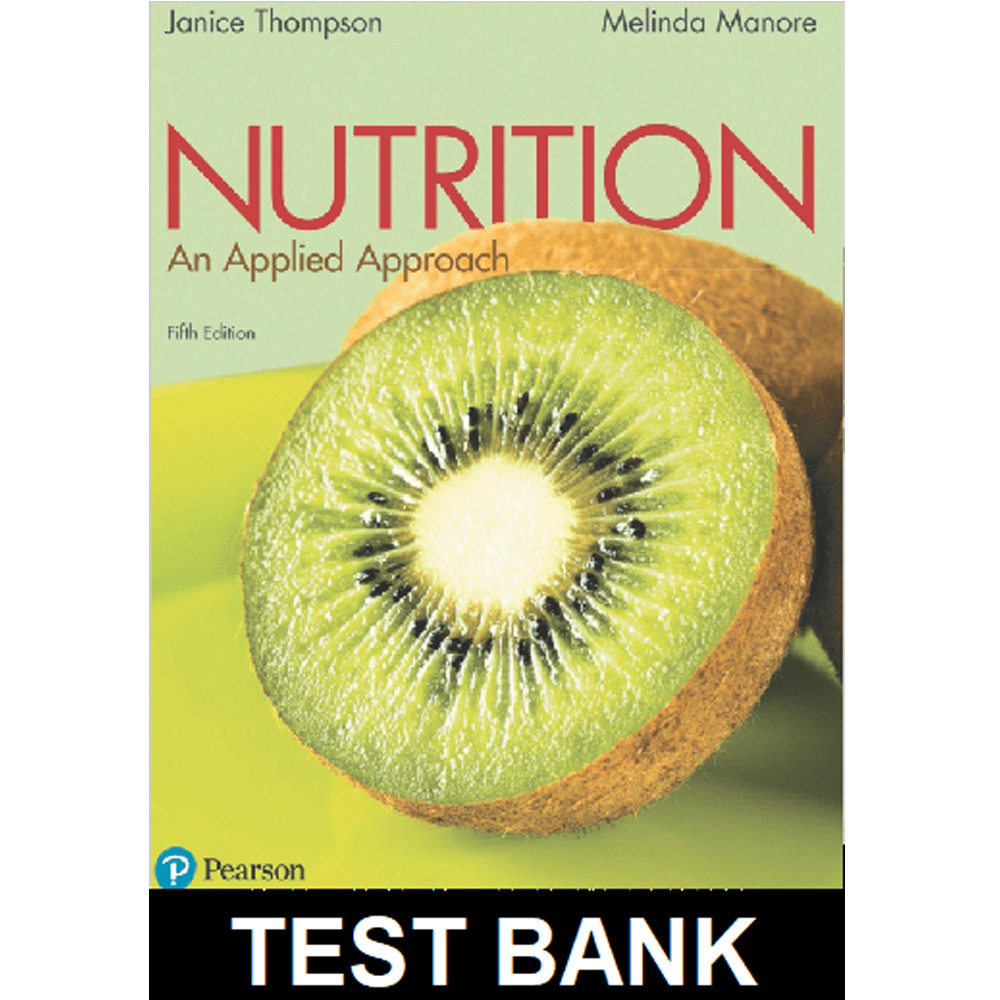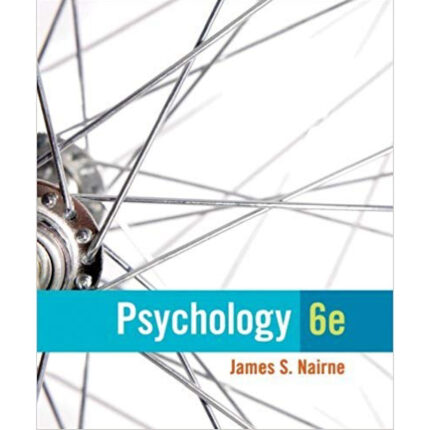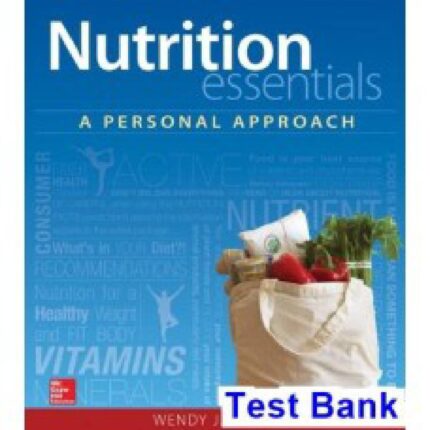Nutrition An Applied Approach 5th Edition By Thompson – Test Bank
Chapter 11 Nutrition and Physical Activity: Keys to Good Health
Multiple Choice Questions
1) Which of the following BEST describes exercise?
A) any movement produced by muscles that increases energy expenditure
B) maximal force or tension level that can be produced by a muscle group
C) leisure physical activity that is purposeful, planned, and structured
D) ability to move a joint fluidly through the complete range of motion
Answer: C
Diff: 2
Skill: Remembering/Understanding
Learning Outcome: 11.1
Chapter/Section: 11.1
2) Which of the following is NOT a physiological benefit of regular physical activity?
A) enhances the action of insulin
B) enhances gastric motility
C) improves sleep patterns
D) decreases high-density lipoprotein (HDL) cholesterol
Answer: D
Diff: 3
Skill: Applying/Analyzing
Learning Outcome: 11.1
Chapter/Section: 11.1
3) Approximately what percentage of Americans report that they do NOT engage in any leisure-time activity?
A) 12 percent
B) 24 percent
C) 36 percent
D) 48 percent
Answer: B
Diff: 1
Skill: Remembering/Understanding
Learning Outcome: 11.2
Chapter/Section: 11.2
4) Physical activity NOT related to a person’s occupation is known as
A) nonoccupational physical activity.
B) leisure-time physical activity.
C) compulsory physical activity.
D) physical fitness.
Answer: B
Diff: 2
Skill: Remembering/Understanding
Learning Outcome: 11.1
Chapter/Section: 11.1
5) How is physical activity related to physical fitness?
A) Physical activity must be aerobic to increase physical fitness.
B) Physical activity promotes physical fitness.
C) Physical activity that is not purposeful, planned, and structured does not promote physical fitness.
D) Low-intensity physical activities such as gardening and housekeeping do not contribute to physical fitness.
Answer: B
Diff: 4
Skill: Applying/Analyzing
Learning Outcome: 11.1
Chapter/Section: 11.1
6) Marco wants to improve his cardiorespiratory fitness. Which type of activity would be the MOST effective to achieve this goal?
A) weight lifting every other day
B) yoga four times a week
C) resistance training three times a week
D) swimming three times a week
Answer: D
Diff: 3
Skill: Applying/Analyzing
Learning Outcome: 11.1
Chapter/Section: 11.1
7) What is meant by the overload principle?
A) subjecting the body to inappropriately high stress
B) stretching a muscle group beyond the joint’s healthy range of motion
C) improving fitness by placing extra physical demand on the body
D) complete depletion of the body’s stored glycogen
Answer: C
Diff: 2
Skill: Remembering/Understanding
Learning Outcome: 11.2
Chapter/Section: 11.2
8) Which of the following is recommended to ensure adequate hydration after completing an exercise session?
A) Drink about 1 cup of fluid per pound of body weight lost.
B) Drink a caffeinated beverage to restore electrolytes.
C) Consume fluids with a mix of water and sodium.
D) Consume 75-100% of fluid lost during exercise.
Answer: C
Diff: 3
Skill: Applying/Analyzing
Learning Outcome: 11.5
Chapter/Section: 11.5
9) Which of the following is NOT a component of physical fitness?
A) caloric restriction
B) body composition
C) flexibility
D) muscular endurance
Answer: A
Diff: 2
Skill: Remembering/Understanding
Learning Outcome: 11.1
Chapter/Section: 11.1
10) The FITT principle is
A) the theory that people who are flexible, intense, tall, and thin are more likely to be fit.
B) the principle followed to achieve an appropriate overload for physical training.
C) a method to determine your fitness level based on your target heart rate.
D) a method used to assess fitness based on flexibility, interest, training, and technique.
Answer: B
Diff: 2
Skill: Remembering/Understanding
Learning Outcome: 11.2
Chapter/Section: 11.2













Reviews
There are no reviews yet.